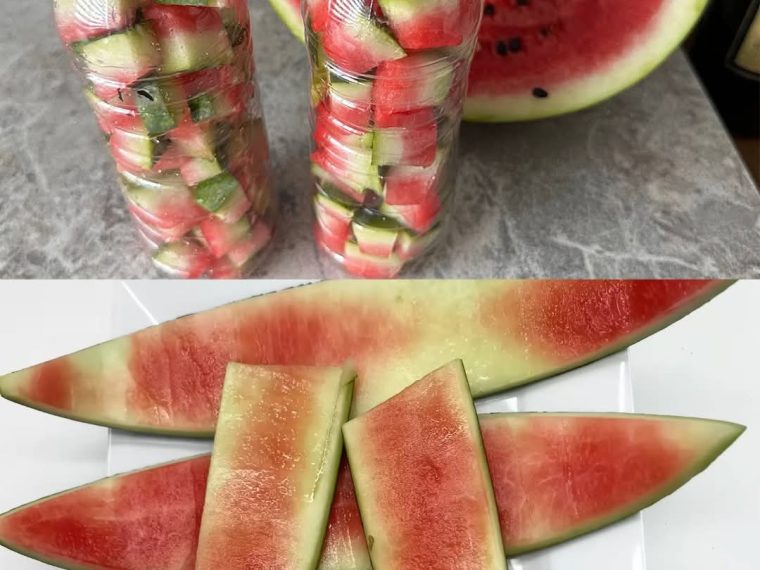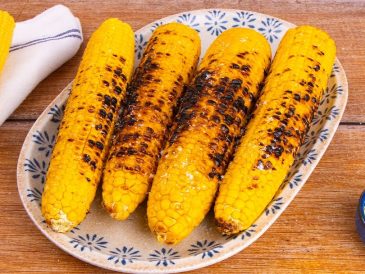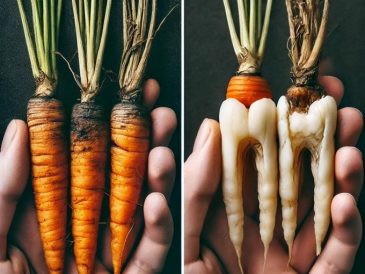Watermelon is one of the most refreshing summer fruits, but most people toss away one of its most underrated parts — the rind. That thick green skin with a white interior is often discarded, yet it holds an amazing potential for flavor and sustainability.
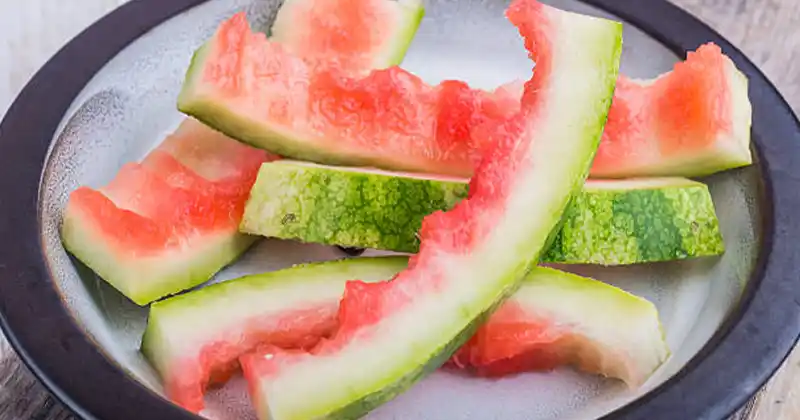
Why waste it when you can turn it into a crunchy, tangy, and aromatic pickle in just a few days? This simple homemade recipe transforms watermelon rinds into an irresistible treat. Not only is it easy to make, but it’s also packed with natural flavor and probiotic benefits. Let’s dive into this unique and creative way to reuse watermelon rinds right in your own kitchen.
Why You Should Pickle Watermelon Rinds
- Reduces food waste
- Adds a crunchy, flavorful snack to your meals
- Full of fiber and nutrients from the leftover rinds
- A great way to impress guests with something unexpected and homemade
- Perfect for small-batch preparation in jars
Ingredients You’ll Need
To make your own quick-pickled watermelon rinds, gather the following:
- 1.5 liters of water
- 175 grams of coarse natural salt
- 80 ml of grape vinegar (divided equally if using multiple jars)
- Watermelon rinds (peeled in thin layers and chopped into small pieces)
- Fresh parsley (a few sprigs per jar)
- A few slices of green pepper (optional, for extra flavor)
- 4 raw chickpeas (per jar, to speed up fermentation)
- A few black peppercorns (for aroma and mild heat)
- Clean, empty plastic or glass bottles (around 0.5-liter size)
Step-by-Step Instructions
1. Prepare the Salt Brine
Start by pouring 1.5 liters of water into a large bowl. Add 175 grams of coarse natural salt and stir until the salt is completely dissolved. This will serve as your brine base.
2. Prep the Watermelon Rinds
Don’t throw away the rinds! Instead, peel off the dark green outer skin in thin layers if you prefer a softer texture. Then chop the white part of the rind into small cubes or thin strips. These will be your pickle base.
3. Fill the Bottles or Jars
Make sure your 0.5-liter bottles or jars are well-cleaned and dried. Begin layering:
- A handful of chopped watermelon rind
- A sprig of fresh parsley
- A few slices of green pepper (optional but recommended)
- Another layer of parsley
- 4 raw chickpeas
- A few black peppercorns
These ingredients enhance the flavor, aroma, and fermentation speed.

4. Add Vinegar
Pour 40 ml of grape vinegar into each 0.5-liter jar (or divide 80 ml between two jars). This adds tanginess and helps preserve the pickles naturally.
5. Pour the Brine
Fill each jar to the top with your prepared saltwater brine. Make sure the contents are fully submerged. Leave just a small space at the top, then seal the lid tightly.
Give each jar a gentle shake to help mix the ingredients.
Storage and Fermentation
Keep the jars in a cool, dry place out of direct sunlight. No need for refrigeration at this stage.
- In just 3 days, you’ll notice a transformation.
- The rinds become tangy, aromatic, and slightly spicy, perfect as a side or a healthy snack.
- If you prefer a deeper fermented flavor, let them sit for up to 15 days.
Why Add Chickpeas and Parsley?
- Raw chickpeas are often used in traditional pickling to speed up the natural fermentation process.
- Parsley adds a refreshing, earthy aroma that balances the acidity of the vinegar.
- Green pepper adds mild heat and sharpness, creating a complex flavor profile.
Serving Suggestions
- Serve alongside grilled meats or roasted vegetables
- Add to sandwiches or wraps for extra crunch
- Use in salads to replace standard pickles
- Enjoy straight from the jar as a healthy snack
Customize Your Pickle
If you don’t have all the ingredients, don’t worry. Even just watermelon rinds, salt, and vinegar can make a delicious pickle. This recipe is highly flexible. Here are some ideas for variations:
- Garlic cloves for a spicy twist
- Mustard seeds or dill for a more traditional pickle flavor
- Chili flakes if you enjoy it spicy
- Carrot slices or cabbage mixed in for extra texture
This small-batch pickled watermelon rind recipe is sustainable, tasty, and fun to make. You don’t need any fancy tools, just some leftover rinds, a few basic ingredients, and a little patience. In just a few days, you’ll have a flavorful treat that impresses both you and your guests.
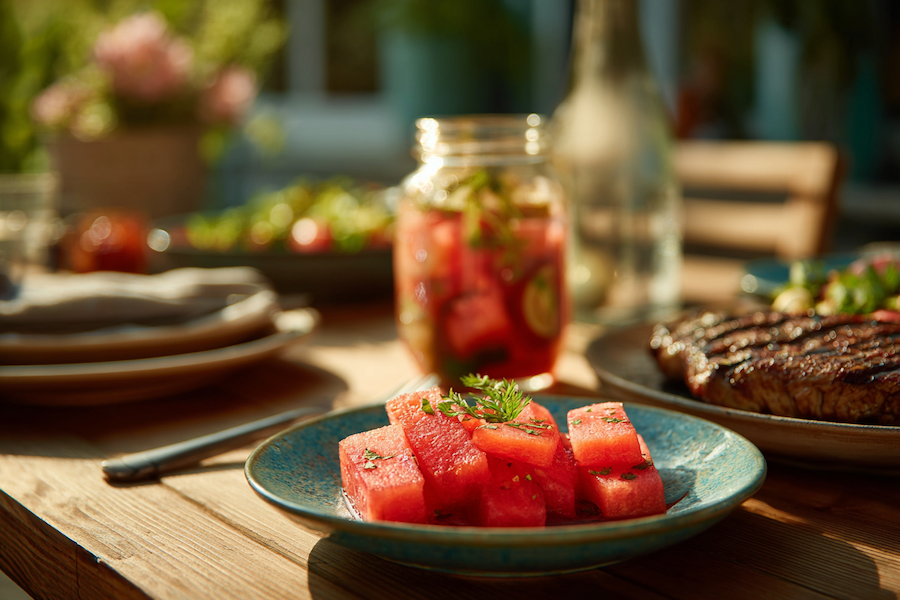
Disclaimer
Always use clean jars and utensils to avoid contamination. If you notice any unusual smell, color, or mold, discard the contents immediately. These pickles are intended for short-term use and are best consumed within a few weeks when stored properly.
Inspired by this? Share the article with your friends!

